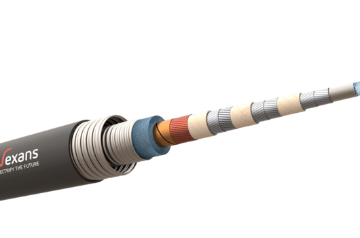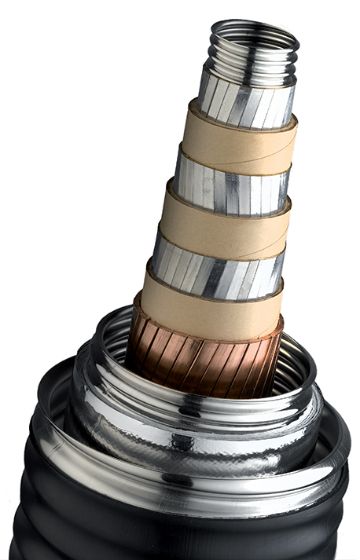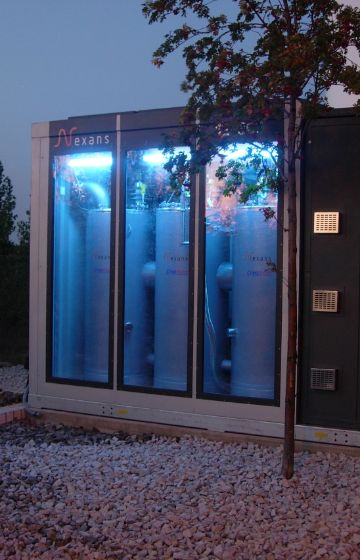-
Markets
- Markets
- Power generation & transmission
- Power distribution & grids
- Building & power usages
-
Industry & Solutions
- Overview
- Aerospace & Defense
- Industrial
- Automation & Industrial Robotics
- Automotive Manufacturing Welding Cables
- Healthcare
- Infrastructure Cables
- Surface Mining
- Nuclear Power Plants
- Oil & Gas Downstream Operations
- Oil and Gas Offshore Upstream
- Upstream Land Operations
- Railway Networks Urban Mass Transit
- High Speed Railway Networks
- Rolling Stock
- Shipbuilding
- Ship to Shore THOF Cables & Assemblies
- Specialty Utility
- Variable Frequency Drive Cables
- Products
- About Nexans USA
- Newsroom
- Energy Forward
- Search
- Contact us
- Compare
- Sign in
Revolutionizing Data Center Power
The Promise of High-Temperature Superconducting Cables
In the modern era where data is a critical resource, data centers have emerged as the core of the digital infrastructure—operating with extensive computational power, storage capacities, and energy requirements. However, as their footprint and power consumption increase, significant challenges arise in terms of efficiency, heat management, land utilization, and environmental impact.
The demand for digital services is soaring. Since 2010, internet users have more than doubled and global internet traffic has increased 25 times. Despite this growth, progress towards more energy-efficient solutions have kept energy demand from data centers and data transmission networks to 1-1.5% of global electricity use. Projections suggest that data center energy consumption should reach 10% of global electricity consumption by 2030.
increase in the demand for electricity by 2030 (source: International Energy Agency)
internet users in 2022 (Source: IEA)
data center energy demand by 2030 (Source: Ember energy report 2025)
Although recent improvements in data center performance have been made, continuous efforts in energy efficiency, R&D, decarbonising electricity supply and supply chains are crucial to achieve the Net Zero Emissions by 2050 (NZE) Scenario.
Transitioning to more environmentally friendly data centers depends on two key strategies: utilizing renewable energy sources and reducing power consumption through the implementation of more efficient technologies.
Data Centers of the future
Ecological, Powerful and Sustainable
Superconducting cables for hyperscale and gigawatt data centers: addressing infrastructure challenges and accelerating the energy transition
As the digital economy continues its exponential growth, data centers are becoming the backbone of global digital infrastructure. Hyperscale and gigawatt-scale data centers are emerging to meet soaring compute demands, especially driven by AI, cloud services and advanced analytics. These next-generation facilities are pushing the limits of traditional electrical infrastructure, both inside and outside the data center footprint.
Power requirements are rapidly escalating, with new hyperscale data centers being designed for power capacities approaching or exceeding 5 gigawatts — an order of magnitude above previous-generation facilities. This scale introduces critical challenges in power delivery, thermal management, land use, carbon emissions and capital investment. The current reliance on conventional copper-based cabling systems is increasingly unsustainable.
Superconducting cables — specifically High-Temperature Superconducting (HTS) cables — offer a compelling solution. With zero electrical resistance, ultra-high current capacity and a compact footprint, HTS cables can radically simplify power infrastructure, reduce thermal loads and support the broader goals of sustainability and electrification.
#1. The growing challenge: powering hyperscale infrastructure
The rise of data-centric technologies has transformed data centers into some of the most power-intensive facilities on the planet. Today’s hyperscale sites are no longer satisfied with hundreds of megawatts—they are planning for gigawatt-scale power input.
Key challenges include:
- Electrical architecture complexity: these facilities require integration across high-voltage (HV), medium-voltage (MV) and low-voltage (LV) systems, each adding cost, space and operational complexity.
- High energy density: AI-accelerated computing, especially GPUs and custom silicon, creates dense clusters requiring massive, localized power delivery.
- Thermal management: conventional copper cabling generates significant heat, driving increased demand for HVAC systems and contributing to operational inefficiencies.
- Sustainability pressure: with growing scrutiny on carbon emissions and land usage, traditional approaches struggle to meet ESG targets.
#2. External infrastructure limits: HV and MV power delivery
Delivering gigawatt-scale power from the grid to data centres imposes major infrastructural burdens:
- HV-MV substation expansion: new builds require extensive land acquisition, complex permitting and large capital investments.
- Overhead lines vulnerability: these lines are increasingly exposed to extreme weather events, raising the risk of outages and long-term reliability issues.
- Underground MV saturation: MV networks require large-scale trenching, which is land-intensive, costly and emissions-heavy. Urban and semi-urban environments are particularly constrained.
#3. Internal constraints: cabling, cooling and space
Within the facility, the limitations of traditional cabling are equally critical:
- MV cable congestion: electrical rooms are overwhelmed by the volume of copper cabling needed to support high-current systems, creating space and routing challenges.
- Thermal impact: copper cables dissipate heat continuously, burdening HVAC systems and inflating energy use.
- Low-voltage delivery inefficiencies: LV AC cabling to high-performance GPUs and compute racks requires long cable runs across ceilings and floors, increasing weight, complexity and heat load.
In short: too many cables, too much heat, too much space consumed.
#4. A transformational solution: High-Temperature Superconducting (HTS) cables
Superconducting cables eliminate electrical resistance, allowing unprecedented power density in a compact form factor. For data centers, this unlocks transformative advantages across power transmission, distribution and infrastructure design.
Key benefits:
- Zero electrical loss: unlike copper, HTS cables have no resistive losses, improving overall energy efficiency.
- Ultra-high current density: HTS systems carry 5-10x the current of copper cables in a fraction of the volume.
- Thermal benefits: minimal heat generation reduces HVAC burden and associated energy costs.
- Space efficiency: smaller cable volumes free up floor and ceiling space, allowing more compute per square meter.
- Sustainability: lower material usage, reduced civil works, and greater energy efficiency all contribute to carbon reduction and ESG compliance.
Protection and Power Conditioning: Enhancing Resilience with Superconducting Fault Current Limiters
More information about superconducting systems:
Power transmission
Power transmission reinvented: superconducting efficiency and compact design for modern data centres
As data centres evolve into hyperscale facilities consuming hundreds of megawatts to multiple gigawatts, the challenge of delivering power efficiently, reliably, and within space-constrained environments has become a critical concern.
Bringing such a power for the primary substation represent a growing challenge for EPCs and developers.
Conventional power transmission using copper or aluminum cables is increasingly inadequate — limited by resistive losses, thermal inefficiencies and bulky physical dimensions.
Superconducting cables - High-Temperature Superconducting (HTS) systems - represent a transformative solution for power transmission within and around large-scale data centres. These advanced conductors can transmit electricity with virtually zero resistance, eliminating the energy losses and heat generation that are inherent to traditional copper-based systems.
As an example, a 300MW data centre, can be powered at Medium Voltage with only 1 HTS Cable of 34.5kV @4.5kA. For redundancy purpose, you will need 2 spare HTS Cables that can be integrated into the ground with a trench of 70cm wide and 50cm deep vs dozens of conventional resistive XLPE cables and wider and deeper trenches that complexify the infrastructure construction and the onsite work safety.
Depending on their electrical architecture, some Data Centers are using an MV distribution ring inside the Data Center. Using HTS cables of 12kV to 34.5kV avoid one potential transformation step, A major benefit for the facility owner in terms of electrical architecture and CAPEX.
Such systems have been in operation in Germany Essen with the project AmpaCity, a 10kV 40MW system which has been in operation for 7 years and since 2021 supporting ComEd Chicago with a 12kV 62MW REG system.
An other compelling advantages of HTS technology lies in its compact footprint. Superconducting cables can carry up to 10 times more current than conventional conductors of the same size—or deliver the same amount of power through a much smaller cross-sectional area. This capability allows data centres to reduce cable volume significantly, freeing up valuable space in conduits, risers, underfloor plenums and electrical rooms. The result is a more streamlined, scalable infrastructure that can support future growth without the need for extensive rewiring or expanded electrical enclosures.
More information about superconductivity:
“ Superconducting cables can transmit significantly more power than conventional ones, 3 to 5 times in AC systems and up to 10 times in DC systems, at similar or lower voltage levels with equivalent land take ”
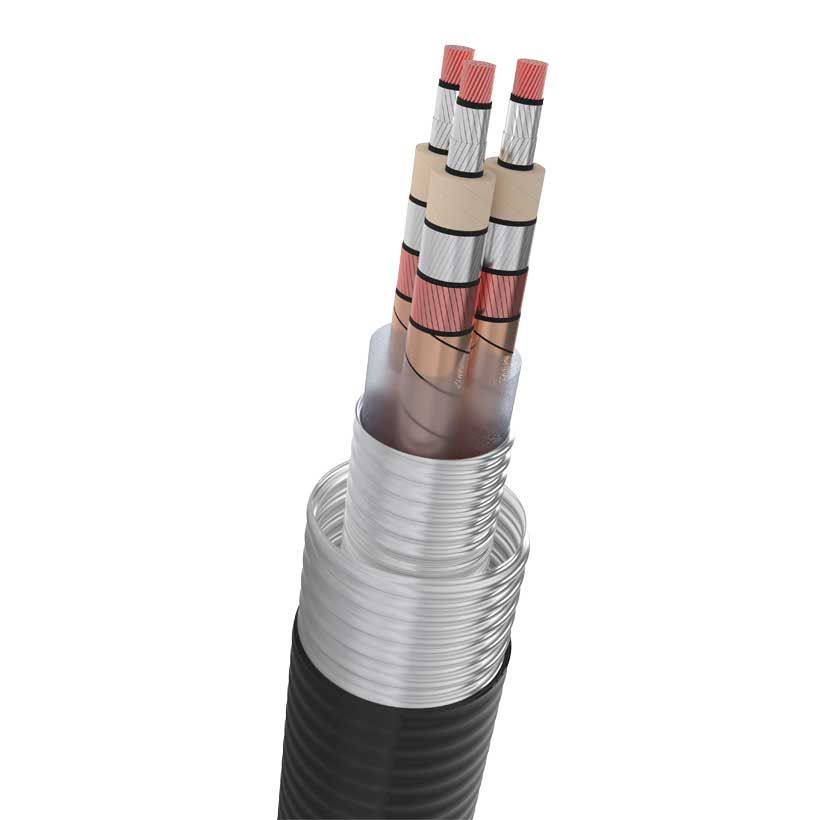
- Enhancing network reliability and ensuring operations: fewer cables are needed to deliver the same amount of power. A 300MW at 34kV data center requires only 1 HTS cables, whereas nearly 36 conventional cables are needed to deliver the same power (three phase systems).
- Combining efficiency with environmental responsibility whilst ensuring economic sustainability and performance: HTS cables, being buried, avoid the risks that overhead lines face from environmental conditions that can cause damage and power outages. Overhead lines also affect the visual appeal of nature. Using underground HTS for power transmission minimizes power outage risks and reduces reliance on CO2-emitting fuel or gas generators
- Space saving: less physical space is needed for cable trays, ducts, and conduit systems. As data centres move closer to expensive urban areas, reducing their footprint lowers land requirements and CAPEX. It also minimizes the cubic meters inside data halls and decreases heat generated by conventional cables, which reduces the load on HVAC systems.
- Minimal land take and optimized costs: HTS cables require less land and lowers construction costs due to its smaller footprint compared to conventional cables. This reduces civil works, shortens project timelines, and minimizes environmental impact for a more sustainable solution.
- Complexity reduction and enhanced profitability : HTS cables can allow data centers to use MV power instead of HV power, reducing the complexity and time for permitting and rights-of-way. This enables earlier facility operation, providing services sooner and generating a faster return on investment.
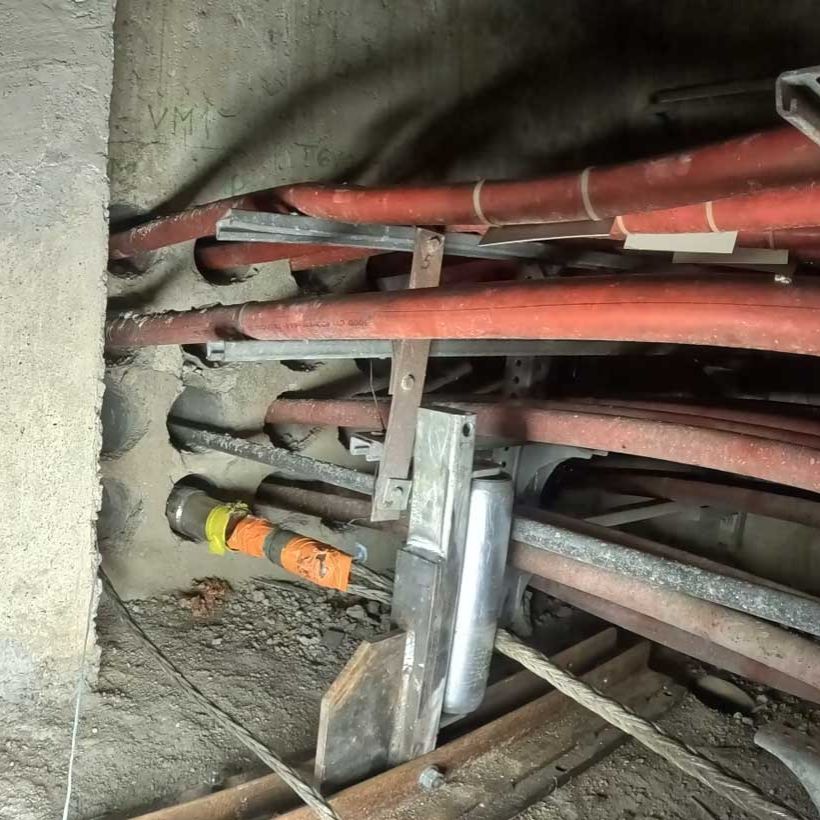
Power distribution
Power distribution inside the data hall: unlocking new efficiency with superconducting cables for powering racks
Low-voltage (LV) power distribution is required in order to power the racks by distributing electrical power at 400-680V AC.
However, as data center energy demands continue to grow - scaling into the hundreds of megawatts or even gigawatts—conventional low-voltage systems face serious limitations. Increasing power at low voltage requires a corresponding increase in current. This leads to bulkier copper cables, higher energy losses, more heat generation and reduced flexibility in cable routing due to voltage drop concerns. These issues increase operational costs and infrastructure complexity inside the data hall. Gigawatt data centers need now LV power at high-current, between 6 to 10kA.
This cannot be efficiently managed with conventional cables; the only possibility is to increase the number of LV Cables due to their limitation in terms of current.
More information about superconductivity:
Direct Current and Superconductivity: a powerful combination for loss-free power distribution
A growing trend in modern electrical infrastructure is the shift toward Direct Current (DC) transmission and distribution, particularly in environments where energy efficiency and power quality are paramount—such as offshore wind, data centres, rail systems and large-scale industrial facilities.
Superconducting cables, especially High-Temperature Superconducting (HTS) systems, offer a strategic advantage in this transition. When paired with DC systems, HTS cables can deliver electricity with zero electrical loss, enabling a new standard of efficiency and performance.
Under conventional conditions, electrical transmission typically incurs 3–5% energy losses due to the resistivity of copper or aluminum cables and the multiple conversion stages in AC and between AC and DC. These losses increase with distance, voltage drop, and current density —adding up to significant inefficiencies in large-scale systems.
In contrast, HTS DC cable systems eliminate resistive losses, regardless of current level or cable length. This makes them ideal for high-capacity, long-distance transmission, as well as dense urban environments and mission-critical infrastructure like hyperscale data centres.
Key advantages of HTS in DC applications include:
- Loss-free transmission across High Voltage (HV), Medium Voltage (MV), and Low Voltage (LV) networks.
- Reduced energy consumption, improving sustainability and lowering operating costs.
- Smaller footprint, enabling compact installations in constrained spaces.
- Higher reliability, with reduced heat generation and simplified cooling requirements.
A pioneering example of this technology in practice is the world’s first HTS DC cable system deployed by SNCF Réseau at Gare Montparnasse in Paris, France. This installation demonstrates how superconducting DC systems can modernize critical infrastructure by enabling higher capacity, lower losses, and more efficient energy use.
For data centers, where every kilowatt counts and energy efficiency is closely tied to cost, sustainability, and uptime, HTS-powered DC transmission represents a forward-looking solution — combining cutting-edge performance with practical benefits across the electrical hierarchy.
Regarding Direct Current (DC) Superconducting cables, the BEST PATHS has validated the possibility of transmitting gigawatts of power over long distances with testing a full-scale 320 kV MgB2 monopole cable system capable of carrying 3.2 GW! A world record and confirming the high potential and efficiency of the DC technology.
More information about superconductivity:
“ Superconducting cables need to find their place in an LVDC environment, particularly for high-power data center applications. These conductors, with zero resistance, allow transmission of up to 10 times more power in the same space. ”
Superconducting cables offer a breakthrough
High-Temperature Superconducting (HTS) cables can carry significantly higher currents with virtually no electrical resistance. This means they can deliver up to 10 times more power than conventional copper cables of the same size — without the heat, loss or bulk.
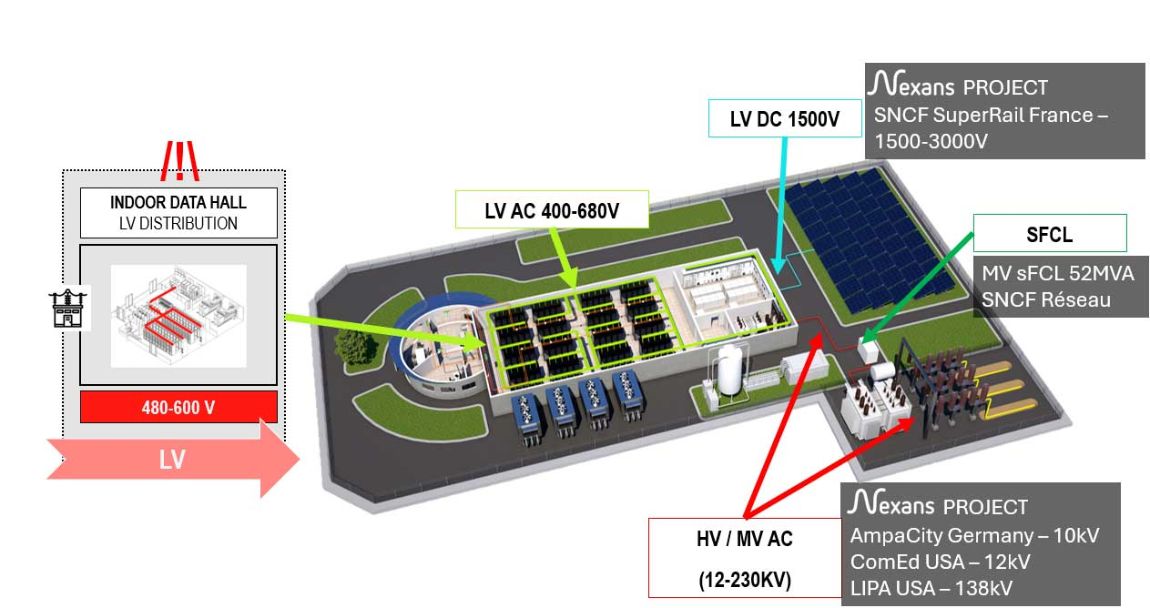
Integrating superconducting cables into low-voltage power distribution within the data hall provides key benefits:
More power
More resistance in fault conditions
Less space requirement
Heat emission and EMF

- Operating at high-current levels 2 times higher than conventional: operating at 8-10kA.
- Unprecedent Peak Fault Current: 67kA which is 6 times higher than conventional cables.
- Compact design - 24 times less than conventional cables: smaller cable footprints free up space in underfloor trays and overhead paths. 1 HTS LV Cable of 6-10kA requires only a 250mm (10 inch) space and 0.05mm².
- Thermal efficiency: no resistive losses mean less heat, reducing the burden on cooling systems.
- Scalability: superconducting cables support higher power delivery over longer distances without voltage drop limitations.
- Safety and familiarity: operating at low voltage maintains equipment safety standards while unlocking higher current capacity.
- Ease of integration and avoiding potential interference: Zero EMF

By combining the safety and simplicity of low-voltage systems with the power density and efficiency of superconductivity, HTS cables enable a more compact, flexible and energy-efficient architecture—one that is better suited to the demands of modern, high-performance data centers.
In short, superconducting power transmission and distribution is not just an incremental improvement - it is a strategic advancement that addresses the core physical and energy challenges outside and inside the data centers.
Protection & power conditioning
Protection and Power Conditioning: enhancing resilience with superconducting fault current limiters
An important but often overlooked advantage of superconducting technology is its role in electrical protection—specifically through the use of Superconducting Fault Current Limiters (SFCLs). These devices significantly enhance power quality, system resilience and operational safety within data center environments.
In the event of a short circuit or fault condition, SFCLs instantly and automatically limit excessive current without the need for mechanical intervention. Unlike conventional protection devices, which rely on opening a circuit to interrupt current flow, superconducting fault current limiters use the intrinsic properties of superconductors to transition rapidly from a superconducting (zero-resistance) state to a resistive state. This transition happens within milliseconds, allowing SFCLs to absorb and limit the fault current before it can damage downstream equipment.
This capability provides several key benefits for data center operations:
More information about superconductivity:

- Protection of critical components: SFCLs safeguard sensitive infrastructure such as circuit breakers, transformers, and power distribution units (PDUs) from damaging overcurrents. A major cost saver and ensuring a higher service continuity above all when DC are looking for the 99.999% operability.
- Unmanned, automatic recovery: once the fault is cleared, the SFCL cools back to its superconducting state and resumes normal operation — without requiring manual reset or technician intervention, supporting autonomous, high-availability data center environments.
- Improved system stability: by smoothing out fault events and reducing their impact, SFCLs help maintain power quality and reduce the risk of cascading failures across interconnected systems.
In the context of hyperscale and gigawatt-scale facilities - where electrical disturbances can have significant operational and financial consequences - SFCLs offer a smart, scalable solution that supports 24/7 reliability, self-healing electrical infrastructure and reduced maintenance requirements.
In short, integrating superconducting fault current limiters into the power architecture provides a modern, automated approach to protection and conditioning—aligning with the needs of next-generation, resilient data centers.
More information about superconductivity:
Enabling the next generation of datacenters
Aligning with the Energy Transition
As global energy systems shift toward electrification and decarbonization, data centers must align with the principles of the energy transition. HTS technology directly supports this trajectory by:
- Reducing grid losses
- Enabling more efficient integration of renewable energy sources
- Supporting compact, modular, and resilient infrastructure design
- Helping data center operators meet regulatory and environmental standards
All these programs and the history of Nexans position the company today as a global leader in superconducting cables for electrical grids. This makes Nexans the first European and global industrial player to possess the technology ready to meet all the needs of data center applications. In other words, for HV, MV, and LV cables, Nexans is currently the only manufacturer worldwide capable of meeting all these needs, while offering a solution to data center manufacturers seeking to increase their electrical power beyond 1 GW.
Moreover, Nexans is not limited to covering all cables for various networks worldwide, whether in the United States, Europe, or even Asia. The cables offered by Nexans not only address environmental constraints but also civil engineering challenges. In terms of civil engineering, this reduces both construction costs and accelerates project completion, as all the cables provided by Nexans have a diameter that does not exceed 250 mm.
More about Nexans High Temperature Superconducting (HTS) Solutions:
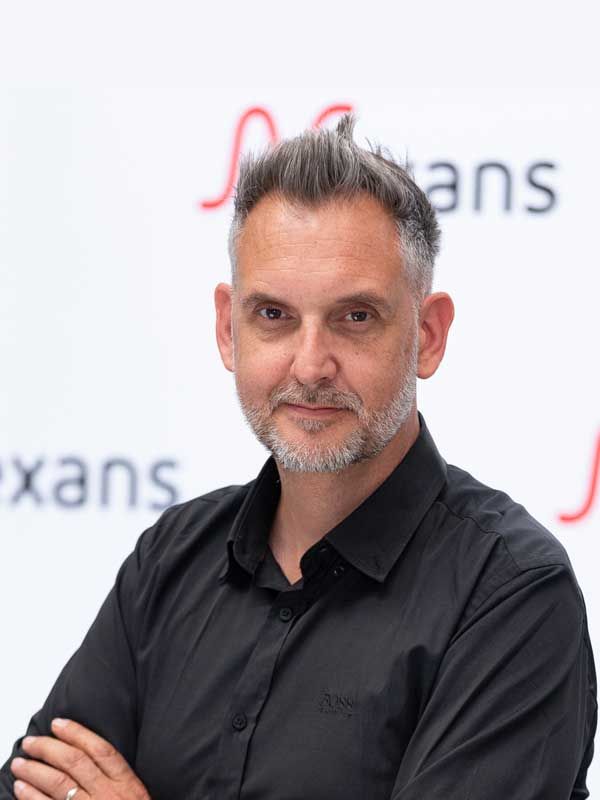
Conclusion: A Call to Action
The data center industry stands at a pivotal juncture. Hyperscale and gigawatt-scale developments cannot rely on 20th-century electrical infrastructure. HTS cables represent a critical leap forward—technically mature, commercially viable, and aligned with global energy and climate goals.
Early adoption and pilot integration into next-gen data centers will set the stage for broader deployment. Operators, infrastructure providers, and policymakers must collaborate now to accelerate the shift toward superconducting-enabled architectures—ensuring a scalable, sustainable and secure digital future.
Nexans is a global player offering superconducting cables suited to all voltage requirements for data centers, providing a compact solution with superior power and optimal flexibility, while addressing environmental constraints and civil engineering challenges.
More about Nexans superconductivity solutions:
Our websites
Select your country to find our products and solutions
-
Africa
- Africa
- Ghana
- Ivory Coast
- Morocco
- North West Africa
- Americas
- Asia
- Europe
- Oceania

